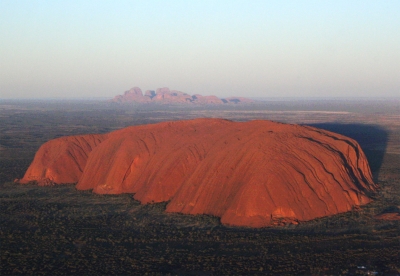
Uluru-Kata Tjuta National Park is named after two of Australia’s most spectacular sites-Uluru, a sandstone monolith and Kata Tjuta a conglomeration of red rock domes. Both Uluru and Kata Tjuta are regarded as sacred spots as some Aboriginal communities believe that their ancestral beings still live here. The Anangu are the traditional Aboriginal owners of Uluru-Kata Tjuta National Park.
Uluru is made of a type of rock called arkose with flaky red surface containing grey patches. The flakes are in fact bits of rock left after water and oxygen have decayed the minerals in the rock. Kata Tjuta is a large dome-like structure made of pebbles and boulders that are cemented by sand and mud. Most of the pieces are granite and basalt, and look like a plum-pudding. This UNESCO World Heritage Site is home to hundreds of plants, birds, reptiles and animals.
Picture Credit : Google

